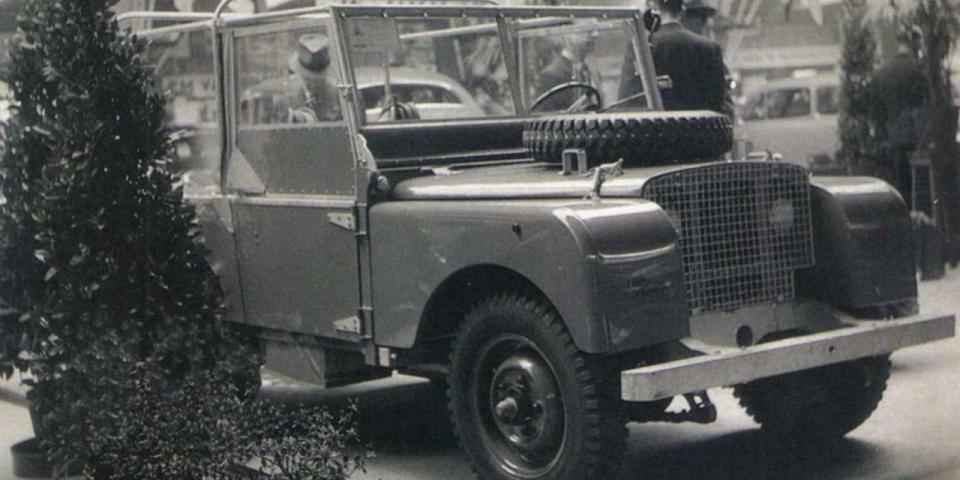On This Day, Rover Introduced the "Land Rover"

On this day in 1948, the Rover Company unveiled a utilitarian little farm vehicle, derived from military underpinnings, that would eventually eclipse the company and become a phenomenon: the first Land Rover.
The official story on Land Rover's website is breathy, lurid, dramatic: "The year is 1947," it reads. "A man sketches the silhouette of a car in the sand of a Welsh beach. That car is the Land Rover. Tough, intrepid, it goes on to change history, mastering all manner of terrain and capturing hearts around the world."
That man was Maurice Wilks, the chief designer at Rover, who recognized rightfully so that there was no room for Rover's previous luxury cars after the devastation of the war. He drove an Army surplus Jeep at his own farm in North Wales. The Jeep was beat to hell, a barely-struggling hooptie. What he wanted was surplus parts for it. What he really needed, however, was a British equivalent.
Wilks was on holiday at the beach in Wales. When he returned, he presented it to the board.
It wasn't hard for them to approve the idea of a utilitarian 4x4, to help the nation rebuild, as well as themselves. Rover was in shambles; England had a massive postwar foreign debt to resolve, raw materials were being rationed, the Ministry of Supply was ordering manufacturers to export their goods, and all Rover knew was to build stuffy luxobarges for the upper classes. "So smug were they that they never built left hand drive vehicles," writes Land Rover FAQ, "there being more than enough business at home and in the right hand drive colonies."
This might be why the first Land Rover had its steering wheel mounted in the center. Which also might be why it was called the "Centre Steer."

By the end of summer 1947, the prototype was up and running. It used a Jeep chassis and steering system, a Rover's 1.6-liter engine and four-speed gearbox, and a two-speed transfer case. There's a strong belief that Wilks' old Jeep sacrificed its life to become the Centre Steer prototype, and it certainly seems reasonable: this was uncharted territory for the Rover firm, after all, and why not improve on what already worked?
Either way, by 1948, the Centre Steer prototype was lost-destroyed to hide it from Willys, torn down to make other prototypes, lost in a barn somewhere. Who knows. Land Rover nerds still hold out hope that someday they'll stumble across their Holy Grail: their ultimate barn find.
Eventually, the Land Rover prototype gained more traction. What would become the Series 1 featured aluminum bodywork, as derived from airplane manufacture, stripped down into flat surfaces and constant radii to save on tooling. It still shared the same wheelbase as the Jeep. Tractor capabilities were nixed, as well as the center steering. The 4WD was permanent. Rover built 48 pre-production models, all in varying shades of dark green, and with the exception of bolt-on bumpers they were mostly the same. Some wound up being sold to early adopter customers. Most of these survive today.

And on April 30, 1948, the Land Rover made it debut at the Amsterdam Motor Show.
Rover only intended to produce the Land Rover for two, three years at most–something to tide the company over until it could begin building luxury cars again.
The Land Rover outsold the Rover brand, on both continents.
As they say, the rest…well, you know.

 Yahoo Autos
Yahoo Autos 